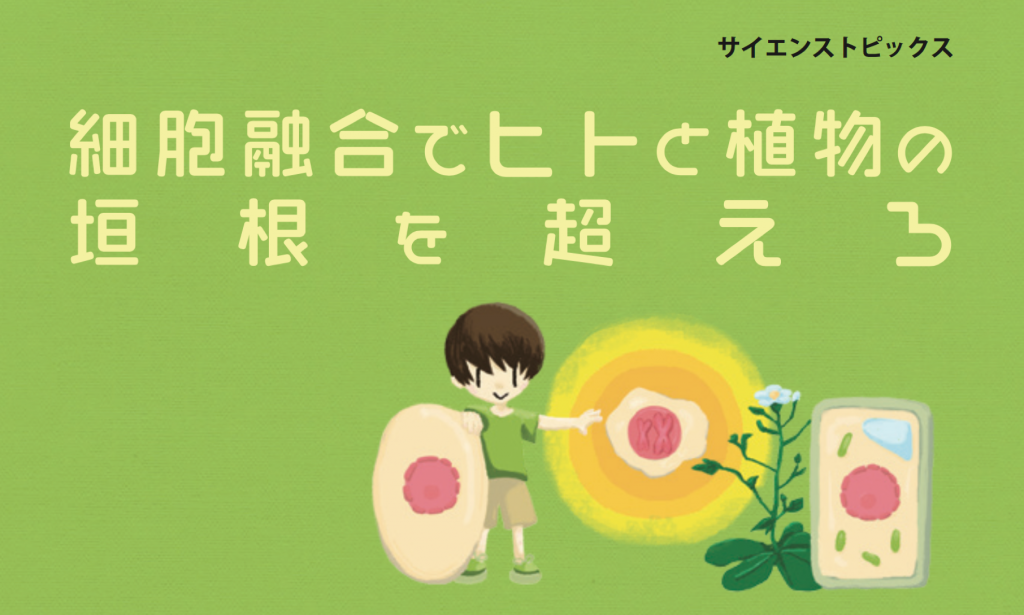- someone
someone vol.38] [Science Topics] Transcending the Barrier between Humans and Plants through Cell Fusion
2017.03.17
When two or more cells fuse together, the fusion cell produces an individual with characteristics inherited from both genes. This feature has been used to artificially create a new plant called a pomato, which produces potatoes in the basement and tomatoes above ground. However, it is not easy to create an individual plant that successfully incorporates each of these desirable characteristics. Naoki Wada of Osaka University wondered if the "artificial chromosome" technology, which has been studied in animal cells, could be used to improve plant breeding. Using artificial chromosomes, a large number of genes can be freely incorporated at once. Plant chromosomes are introduced into cultured animal cells, and genetic recombination is carried out in the animal cells to create artificial chromosomes with the desired gene cluster. By reintroducing the artificial chromosomes into plants, we may be able to achieve our breeding goal.
First, it is necessary to stably introduce plant chromosomes of a different species into animal cells. Although fusion of human and plant cells has been attempted for about 40 years, cells capable of propagating after fusion had not yet been created. To select only fused cells, Dr. Wada manipulated genes so that only cells with transgenic plant chromosomes fluoresce and survive in a medium containing antibiotics. In addition, he found conditions that facilitated fusion, such as matching the cell cycle to mitosis. As a result, they succeeded in creating a partially fused cell that can proliferate by incorporating part of a plant chromosome into a human cell.
The results of this research have shown that humans and plants, which have different genes and even different cell structures, share a common mechanism for maintaining stable chromosomes and for activating genes. Currently, we can only produce one fusion cell out of about one million cells by improving the efficiency of the fusion process. Furthermore, if we can understand the mechanism for stabilizing different types of chromosomes, we will be able to breed plants more efficiently using artificial chromosomes. In the future, new varieties born from animal cells may emerge. (Text: Takeshi Inoue)
Interviewed by: Naoki Wada, Project Assistant Professor, Graduate School of Engineering, Osaka University
